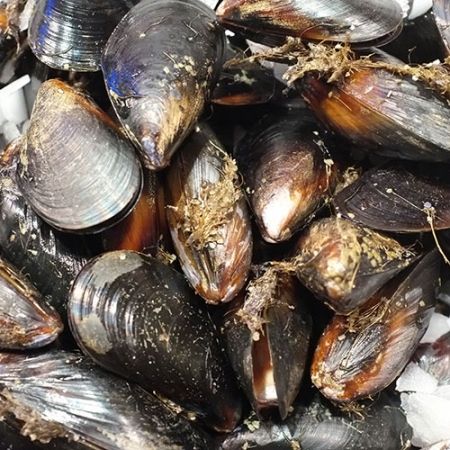The science of muscles and exercise is a fascinating topic. As I dug into this season of clams, mussels and oysters, I found that they taught me some mighty lessons. Mollusk muscles are built on the same principles as ours. Mollusks have muscles (one or two) located inside the shell that are called adductors. They are strong circular muscles used to open and close their shells. Interestingly enough their muscle fibers perform similar tasks to ours. They have fast twitch muscles that quickly snap shut the shell if they sense an advance from a predator. They also have slow twitch muscles that allow them to keep their shells shut for long periods of time, for example, if they sense an aquatic environment that is unhealthy. Both situations are vital to the survival of the mollusk.
Humans have fast twitch muscles for intense bursts of energy called for in “fight or flight,” but we also need the ability to keep moving over long periods of time for “hunting and gathering.” Muscles are constantly breaking down as each cell’s life comes to an end. They are either asked to be replaced by new and stronger muscles and cells — because we used them — or less and smaller — because we didn’t. It is a very dynamic process. When we use our muscles by exercising, we are asking our body to renew itself and to profuse itself with life-carrying oxygen.
Each time we do this we increase our carrying capacity and the health of our entire body. Did you know that sedentary women are five times move likely to die than the fittest women, and that exercise decreases the risk of most disease (and increases the survivability)? Check out the book Younger Next Year by Crowley and Lodge for a real eye opening read.
“Did you know that sedentary women are five times move likely to die than the fittest women?”
Our lives are full of challenges mentally, physically, environmentally and emotionally. We need the ability to react, to move, to remember, to calculate, to absorb and to endure. Without constantly renewing our muscles and asking for oxygen to flow in every inch of our bodies we cannot function at our highest and greatest potential. It is important to shut that shell quickly, or hold tight for a long time if our environment requires it. The constant request to renew and repair our bodies is done by the daily exercise we ask of it. It is not just to look better or feel better but it goes far beyond that.
A strong yet parallel function to the mollusk shutting it’s shell tight might be our body resisting the onslaught of some cancer-producing transitory predator. Maybe there is a “hold your shell tight for a long time” period of stress in your life that you can’t control. If your body is strong and able, you can fight it and endure. Surprisingly enough exercise helps with that, too.
Whatever the case may be, in order to get the job done research tells us that we must exercise almost daily. Spend four days a week doing aerobic exercise and at least two days doing anaerobic (strength training). This is essential to our good health. This is the way that we give our body the upkeep it needs so we can either shut our shell fast or hold tight when we need to. It’s as basic as a mussel muscle, yet as profound as the basis for our own healthy life.

